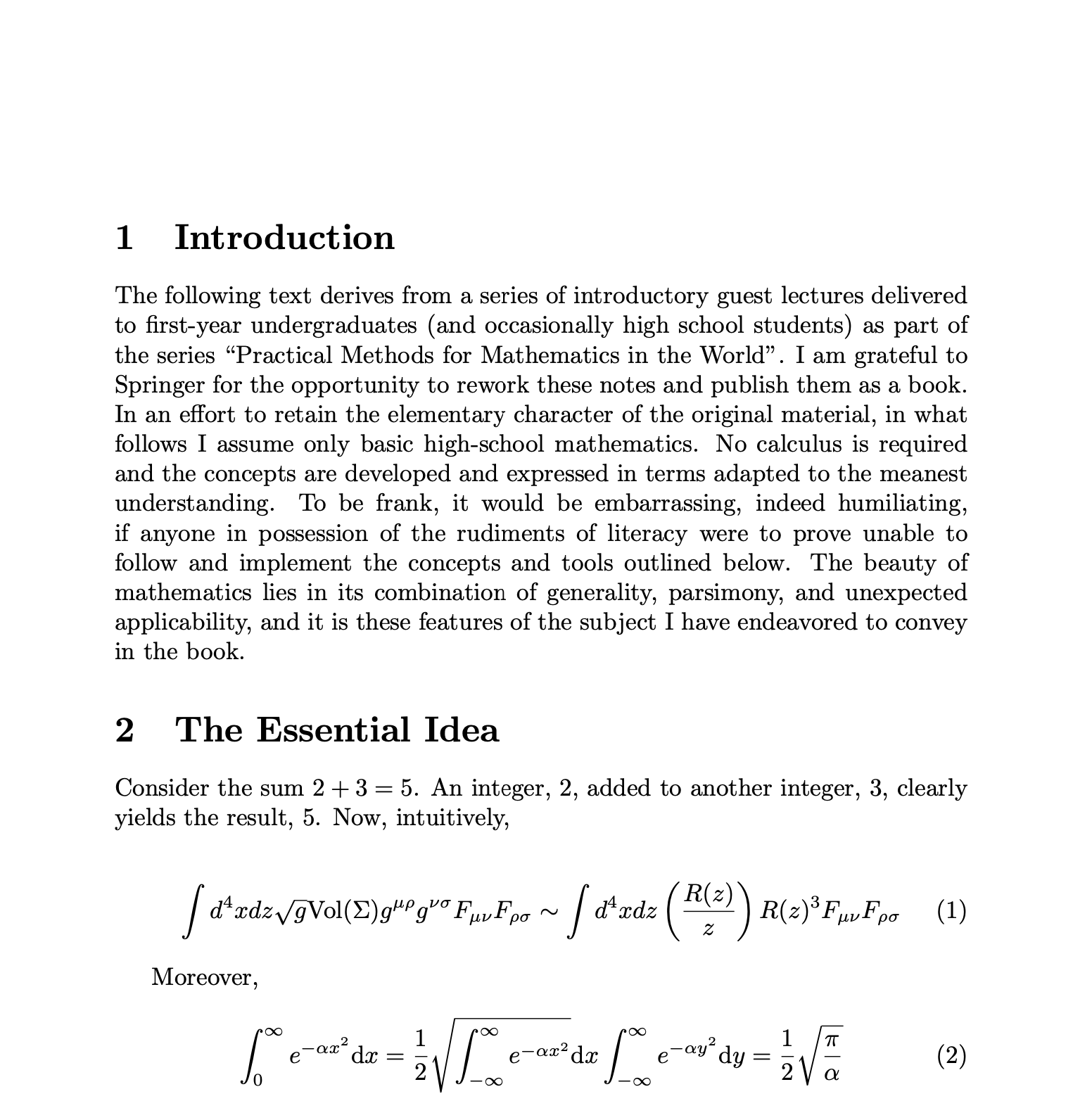Perhaps you can't read math, perhaps you can only do math?
Every Springer Math Text (From Kieran Healy)
Kieran Healy is not exaggerating very much here, I decided to look at a springer yellow math book “Application-Inspired Linear Algebra” by Heather Moon, Thomas J. Asaki and Marie A. Snipes, (I’m naming names here, partly out of academic practice, but mostly to name the guilty) published in 2022. It is marketed as a text for your first college course in linear algebra. It seems to start well: “Welcome to your first course in linear algebra—arguably the most useful mathematical subject you will encounter.”. The book uses 2 main examples - decoding cat scans and modeling diffusion welding. And I got lost about half way though chapter 2 (see the definitions below). Basically, I wouldn’t have been able to read this book, if I had not already known a little about linear algebra from watching Gilbert Strang’s MIT lectures on youtube. I recommend that anyone having to take a class using this book, first learn linear algebra from youtube (perhaps Khan academy), and then this book will make sense and you will get an A grade. Overall however, I think it would be hard to learn linear algebra from this book, without being in a college course and learning both socially and hands on (which the authors obviously want you to do) it’s also an expensive book, and I wonder if it was more written to help professors get tenure or because writing books is what the academic does, than to really help people learn applied linear algebra.
What is the real problem? - I am beginning to think that the problem is that language and words about action make no sense unless you know the action. The word “run” makes no sense unless you have ran as a child, or seen others run in real life. When you learn a second language, you are only learning a new word (‘correr’ in Spanish - or perhaps ‘carrera’), not the new idea. Math seems to present the most abstract ideas and most concise and obtuse symbols (from multiple ancient languages) all at the same time, so I for one have a lot of trouble unless someone is leading me through it all like a tutor.
And here is the first definition in chapter 2 (chapter 1 is the intro that makes promises about how this isn’t hard to learn) Definition 2.2.1
Let 𝐼1I1 and 𝐼2I2 be images. We say that 𝐼1=𝐼2I1=I2 if each pair of corresponding pixels from 𝐼1I1and 𝐼2I2 has the same intensity.
The convention in Figure 2.4, Definition 2.2.1, and Equation 2.1 give us a means to write an equation, corresponding to the upper left pixel of Image D,
8=0𝛼+4𝛽+8𝛾.8=0α+4β+8γ.
This equation has a very specific form: it is a linear equation. Such equations are at the heart of the study of linear algebra, so we recall the definition below.
Definition 2.2.2
A linear equation is an equation of the form
𝑎1𝑥1+𝑎2𝑥2+⋯+𝑎𝑛𝑥𝑛=𝑏,a1x1+a2x2+⋯+anxn=b,
where 𝑏∈ℝb∈R, 𝑎1,⋯,𝑎𝑛∈ℝa1,⋯,an∈R are called coefficients and 𝑥1,𝑥2,…,𝑥𝑛x1,x2,…,xn are called variables.
In the definition above, we use the symbol “∈∈” and mean “element of” or “in the set.” We write, above, that 𝑏∈ℝb∈R. This means that b is an element of the set of all real numbers. Typically, we read this as “b is real.” We will use this notation throughout the text for many different sets.
